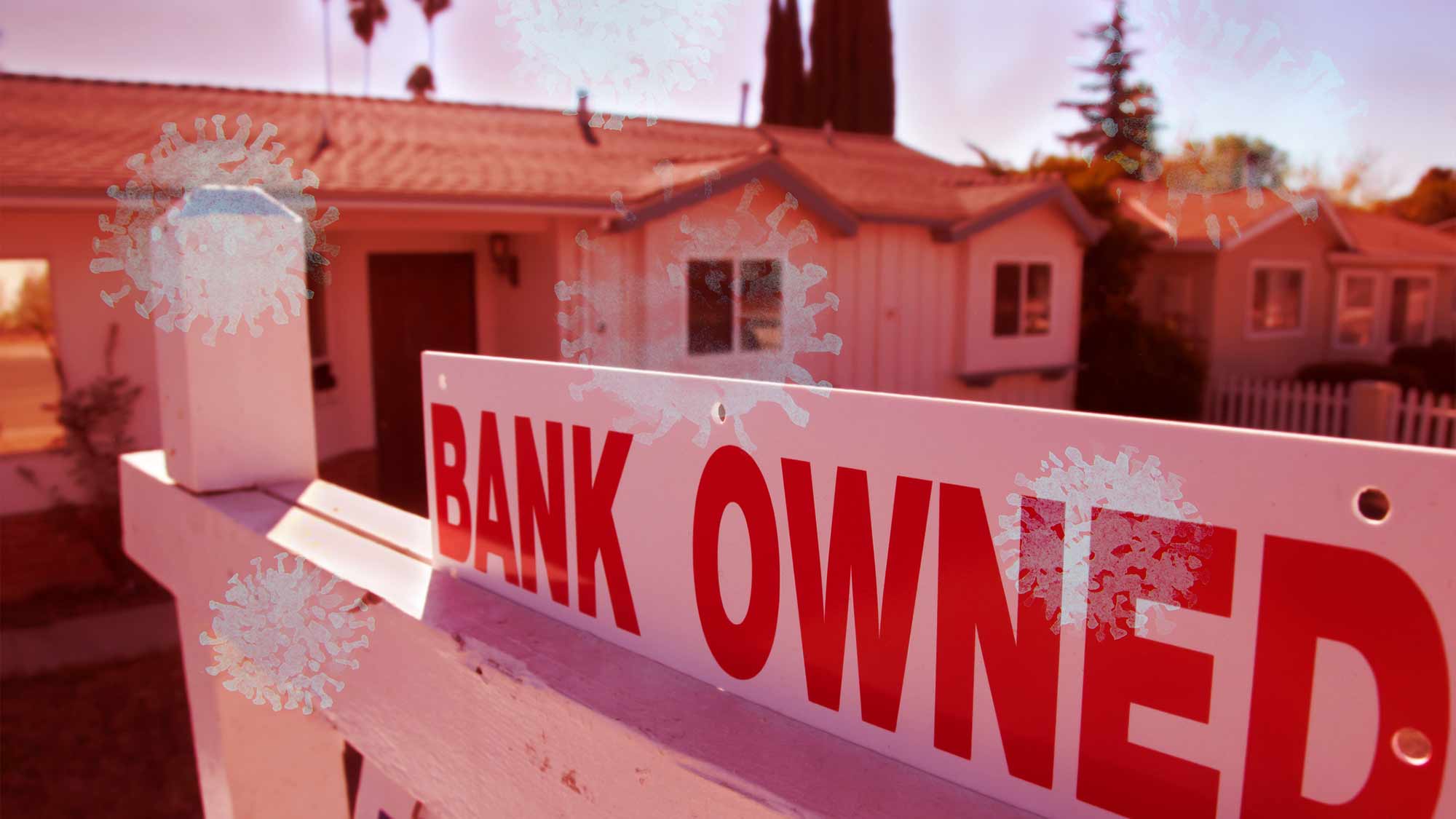
arkbuildermedia/Getty Images; realtor.com
With millions of Americans filing for unemployment in the past few weeks amid the spreading coronavirus pandemic, and in spite of mortgage forbearance measures, a wave of foreclosures may not be far behind—especially for those living in the Northeast and parts of the South, says a recent report.
But real estate experts have predicted that this will be no tidal wave, unlike during the Great Recession, in which millions of people lose their homes. This time around, buyers are more financially qualified, and subprime and “liar loans,” for which income hasn’t been verified, have all but disappeared, making the market more stable. And unlike the last downturn, the federal government and many individual banks are offering forbearance and a stay of evictions for 60 days for many mortgages.
New Jersey and Florida have the most counties at risk of a rise in foreclosures due to economic fallout from the COVID-19 pandemic, according to a recent report from real estate information firm ATTOM Data Solutions. Meanwhile, the West and Midwest are less likely to see significant numbers of people losing their homes.
To come up with its findings, ATTOM looked at the counties with the most foreclosure filings and underwater mortgages (where homeowners owe more on a home than it’s worth) in the last quarter of 2019. The firm also took into account the percentage of average local wages needed to afford the major expenses associated with owning a median-priced home, such as maintenance, in the first quarter of this year. Only 483 counties, which had enough data available, were included in the report.
“Some parts of the country have seen home prices surge way past what average wage earners can afford, while others may be seeing equity lag if prices have flattened out recently or dipped,” Todd Teta, ATTOM’s chief product officer, said in a statement. “Homeowners who bought in the past year, at the top of the market, are more likely to fall into that group.”
Some markets have more foreclosures than others because those cases have been tied up in the courts for years and are just now being completed.
These counties have the highest foreclosure risks
About 14 of New Jersey’s 21 counties were ranked among the nation’s 50 most vulnerable, followed by 10 in Florida, according to the report. Four counties in New York and three in Connecticut also made the top 50. The only Western and Southwestern counties to make the list were Shasta County in Northern California, near the border with Oregon, and Arizona’s Navajo County, northeast of Phoenix.
In New Jersey, five of those counties were in the New York City suburban area. They included Bergen, Essex, Passaic, Middlesex, and Union counties. In Florida, the most vulnerable counties were mainly in the northern and central swaths of the state and included Flagler, Lake, Clay, Hernando, and Osceola.
“The Northeast, particularly New Jersey, faces a triple whammy of unaffordable housing, above-average levels of underwater properties, and relatively high percentages of properties facing possible foreclosure,” Teta said.
“Homeowners who bought recently, at the peak of the market, will face the biggest issues if prices drop and they start owing more than their homes are worth,” he continued. “It increases the chances for a repeat of what happened in the aftermath of the Great Recession of the late 2000 and early 2010s, with rising foreclosures or people simply walking away from their properties, unable or unwilling to keeping paying off debt.”
Just five Midwestern counties were on the 50 riskiest list—and all were in Illinois. Four were in the Chicago metro area, including McHenry County, Kane County, Will County, and Lake County. The fifth, Tazewell County, is near Peoria.
These counties have the lowest foreclosure risks
On the other side of the ranking were the least vulnerable counties. Texas led the nation with 10 of the 50 least at-risk counties on the list. Three of these counties were in the Dallas metro area, while two more were in the Midland area.
The Lone Star State was followed by Wisconsin, with seven of the least riskiest counties, and Colorado with five.
“The Midwest generally has the lowest, most affordable home prices and some of the lowest foreclosure rates in the country,” Teta said. “The West is saddled with prices way out of reach for average workers in many areas. But because prices have run up so much, equity in that region is way better than in other regions.”
The post This Is Where We’ll Likely See the First Wave of Coronavirus-Fueled Foreclosures appeared first on Real Estate News & Insights | realtor.com®.
